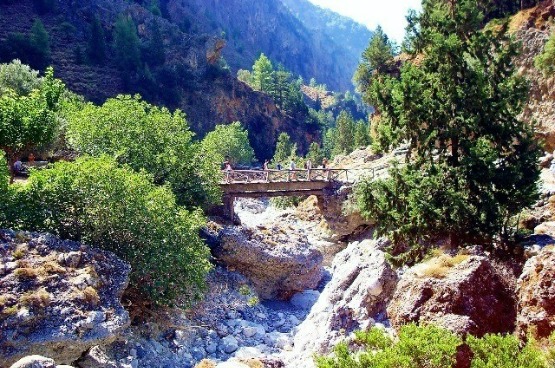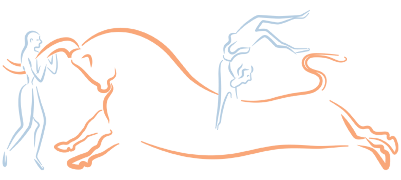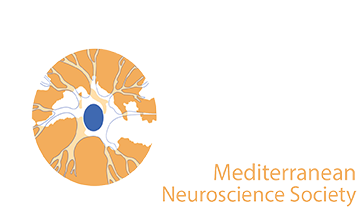City of Chania
How to get there
Traveling to Chania can be done by air or sea. Following a detailed guide on how to get to Chania.
By Air
Flights are operated to and from Chania International Airport “Ioannis Daskalogiannis”
- International Flights
Many European cities offer direct flights to Chania International Airport, especially during the summer tourist season.
- Domestic Flights
There are frequent flights from Athens to Chania. The flight takes about 1 hour.
To travel from the airport to the city center of Chania, visitors can use:
- Taxi
Taxis are available at the airport and can take you to the city center in about 18-25 minutes. The fare is approximately €24-€30. - Bus
Public buses run regularly from the airport to the city center, taking around 25-30 minutes. The fare is about €2.50-€3.00.
By Sea
Chania is served by Souda Port, located approximately 7 kilometers east of Chania city center. It is the primary port for ferries connecting Crete with the mainland and other islands.
Ferries connect Chania with Piraeus (the port of Athens) and other islands. The journey takes approximately 7-9 hours, and you can choose between standard seating, cabins, or luxury cabins.
To travel from Souda Port to the city center of Chania, visitors can use:
- Taxi
Taxis are available at the port and can take you to the city center in about 10 minutes. The fare is around €10-€15. - Bus
Public buses run from Souda Port to Chania city center taking about 20 minutes.
The fare is around €2.50.
Chania International Airport “Ioannis Daskalogiannis” – https://www.chq-airport.gr/en
Souda Port – https://soudaport.gr/

Nestled on the northwest coast of Crete, Chania is a city where rich history meets natural beauty and vibrant modern life. As the second largest city on Greece’s largest island, Chania offers a unique blend of cultural heritage, stunning landscapes, and contemporary amenities, making it a captivating destination for travelers from around the world.
Chania is a bustling city that harmonizes its traditional charm with modern conveniences. Is divided into two main areas a) the Old Town, where visitors can explore historical sites, boutique shops, and a variety of cafes and restaurants and b) the modern city, the contemporary part of Chania which offers shopping centers, public services, and entertainment facilities, catering to all the needs of residents and visitors.
From its origins in ancient times to its role in modern Greece, Chania’s history is a testament to its strategic importance and enduring allure.
Chania enjoys a Mediterranean climate with mild, wet winters and hot, dry summers, making it an ideal destination year-round.
About Chania

History
The earliest evidence of human settlement in Chania dates back to the Minoan period (around 3000-1100 BC). The ancient city of Kydonia, located on the site of present-day Chania, was one of the most important urban centers in Crete during this era. Excavations have revealed remnants of Minoan palaces and artifacts, indicating a thriving civilization with advanced architectural and artistic achievements.
Following the decline of the Minoan civilization, Chania continued to be an important city-state during the Classical and Hellenistic periods (5th-1st centuries BC). It maintained commercial and cultural ties with other Greek city-states and played a significant role in the regional politics of Crete. The city was known for its temples, public buildings, and well-organized urban planning.
In 67 BC Chania came under Roman rule and later, in the 4th century, became part of the Byzantine Empire. During these periods, the city experienced economic prosperity and cultural development. The construction of churches, fortifications, and other public works marked this era. Chania also became an early center of Christianity in Crete, with several basilicas and religious sites established.
The Venetian period (1204-1669) left a lasting imprint on Chania’s architecture and culture. The Venetians, recognizing the strategic importance of the city, fortified it with massive walls and constructed numerous public buildings, churches, and residences. The Venetian Harbor, with its distinctive lighthouse, arsenals, and waterfront buildings, remains one of the most iconic features of Chania today. The blend of Venetian and local architectural styles during this period created a unique and enduring cultural heritage.
In 1669, Chania fell to the Ottoman Empire, marking a new chapter in its history. The Ottomans introduced new architectural elements, such as mosques, baths, and fountains, which blended with the existing Venetian structures. The city became a melting pot of different cultures and religions, with a diverse population that included Muslims, Christians, and Jews. The Ottoman influence is still evident in the city’s architecture and urban layout.
Chania was incorporated into the modern Greek state in 1913, following the Balkan Wars. The city played a significant role during World War II, particularly during the Battle of Crete in 1941, when it was heavily bombed by German forces. Despite the destruction, Chania rebuilt and preserved much of its historical heritage.

Modern era
Chania today is a bustling urban center that has successfully preserved its historical charm while embracing modern infrastructure and amenities. The cityscape is a striking juxtaposition of the Old Town, with its narrow cobblestone streets and Venetian architecture, and the new districts, which feature contemporary buildings, shopping centers, and advanced facilities.
Tourism is the cornerstone of Chania’s economy distinguished city as one of Greece’s most popular destinations, attracting visitors from all over the world, drawn by its picturesque Venetian Harbor, historic landmarks, and stunning natural landscapes. Venetian Harbor is the heart of the city’s tourism; however, visitors can also explore, among others, the Archaeological Museum, housed in a former Venetian monastery, or wander through the Maritime Museum to learn about Chania’s naval history.
Famous film “Zorba the Greek” brought international fame to the region and boosted significantly tourism in Chania and Crete as a whole. The filming locations, especially Stavros Beach, have become significant tourist attractions, and the cultural impact of the film continues to be celebrated in Chania today. Many local businesses, including tavernas and hotels, embrace the Zorba theme, offering Zorba-inspired dishes and decor.
Agriculture is another major source of employment in the region, providing jobs for a significant portion of the population. Many families are involved in farming, either as their primary occupation or in conjunction with other work. The surrounding region is known for its olive oil, wine, citrus fruits, and vegetables, as well as for its aromatic’s herbs (oregano, thyme, rosemary, sage) and traditional practice of beekeeping, producing high-quality honey, particularly thyme honey, which is highly valued for its flavor and health benefits.
The agricultural sector contributes significantly to the local economy also through agrotourism, where visitors can experience farm life and learn about traditional agricultural practices.
Chania has a strong educational system, with numerous public and private schools, vocational training centers, and higher education institutions like the Technical University of Crete, which fosters innovation and technology-driven businesses. The university collaborates with local industries, contributing to the city’s economic growth.
Culture
Chania hosts numerous festivals and events throughout the year, celebrating its cultural diversity and artistic heritage. Some of the most notable include:
- The Chania Film Festival
An annual event that attracts filmmakers and cinema enthusiasts from around the world, showcasing a diverse array of films, including international and Greek productions. - The Renaissance Festival
Held in the summer, this festival features music, theater, and dance performances that celebrate the cultural renaissance of Chania, often staged in historical venues like the Venetian Harbor. - The Feast of St. Nicholas
This religious and cultural celebration takes place on December 6th, honoring the patron saint of sailors with parades, music, and traditional dances. - Carnival
Before the start of Lent, Chania’s Carnival is a vibrant event filled with costumes, parades, and parties, reflecting the city’s playful and celebratory spirit.
Chania boasts a vibrant performing arts scene, with numerous theaters and cultural centers hosting plays, concerts, and dance performances. The Municipal Theatre of Chania and the Centre of Mediterranean Architecture are prominent venues that support and promote artistic endeavors.
Also, Chania is home to several educational institutions that contribute to the city’s cultural vibrancy. The Technical University of Crete, along with various cultural foundations and libraries, offers programmes and events that foster intellectual and artistic growth. These institutions play a crucial role in preserving Chania’s cultural heritage and promoting contemporary cultural expressions.

Traditions
Chania boasts a rich tapestry of traditions that reflect its diverse heritage and vibrant community, keeping the spirit of the past alive while embracing the present.
One of the most cherished traditions in Chania is the famed Cretan hospitality, or “philoxenia.” Locals warmly welcome visitors into their homes and lives, offering them food, drink, and genuine companionship. This tradition is a cornerstone of the Cretan way of life, reflecting the islanders’ generosity and kindness.
Cretan music and dance are integral parts of Chania’s cultural identity. The sounds of the lyra (a three-stringed instrument) and the laouto (a type of lute) are commonly heard at festivals, weddings, and social gatherings. The Pentozali, Sirtos, and Sousta are some of the traditional dances that are performed, each with its own unique steps and rhythms.
Crafts remain an essential part of life in Chania. Artisans create beautiful items such as woven textiles, pottery, leather goods, and jewelry. These crafts are often passed down through generations, preserving the skills and techniques of the past. Visitors can find handmade crafts in local markets and shops. Art galleries and workshops throughout the city offer insights into the creative processes and traditions of Cretan artisans.
Religion plays a significant role in the lives of many Chania residents. The city is home to numerous churches and monasteries, where religious festivals and rituals are observed with great reverence. Easter is particularly important, marked by solemn processions, the lighting of candles, and communal feasts.
Traditional Cretan attire is still worn on special occasions and during cultural festivals. Men’s traditional dress includes the vraka (baggy trousers) and a black shirt, while women wear embroidered dresses and headscarves. These garments are often richly decorated, reflecting the island’s history and artistry.
Cuisine
Chania cuisine reflects the island’s cultural heritage, geographical diversity, and Mediterranean influences, making it a true gastronomic delight. Emphasizes fresh, local, and seasonal ingredients, which are the cornerstone of Mediterranean cooking.
Key ingredients of local cuisine include:
Cretan olive oil
A staple, used generously in cooking, dressings, and as a finishing touch on various dishes.
Vegetables and Greens
The region’s fertile soil produces an abundance of vegetables, including tomatoes, zucchini, eggplants, and wild greens like horta (edible weeds).
Legumes
Lentils, chickpeas, and beans are commonly used in soups and salads, contributing to the region’s nutritious offerings.
Cretan Cheeses
Local cheeses, such as graviera, mizithra, and feta, are integral to many dishes, providing rich flavors and textures.
Herbs
Fresh herbs like oregano, thyme, rosemary, and mint are used to enhance the natural flavors of dishes.
Seafood
Chania’s coastal location ensures a plentiful supply of fresh fish, octopus, and squid, often prepared simply to highlight their flavors.
Meat
While vegetables are prominent, lamb, goat, and pork are used in traditional dishes, particularly during festive occasions.

Signature dishes of Chania’s cuisine are:
Dakos
Salad featuring barley rusks topped with diced tomatoes, crumbled feta or mizithra cheese, olives, and a drizzle of olive oil, garnished with oregano. This dish epitomizes the freshness of Cretan ingredients.
Kalitsounia
Small pastries filled with cheese, wild greens, or a mixture of both. These delicious bites are often served as appetizers or snacks during celebrations and family gatherings.
Boureki
A savory pie made with layers of zucchini, potatoes, and mizithra cheese, baked with olive oil and herbs. This dish is a testament to the region’s agricultural bounty.
Chaniotiko Boureki
Similar to boureki but often includes a layer of phyllo dough and is specific to the Chania region.
Moussaka
A classic Greek dish made with layers of eggplant, minced meat, and béchamel sauce. Chania’s version often incorporates local spices and herbs, enhancing its flavor profile.
Grilled Octopus
A local favorite, fresh octopus is marinated and grilled, typically served with lemon and olive oil. This dish captures the essence of Chania’s coastal cuisine
Tsigaristo
A hearty lamb or goat stew, slow-cooked with wild herbs and spices, often served with potatoes. This dish is a comfort food staple in Cretan households.
Sarikopitakia
Cheese-filled pastries shaped like a “sariki” (traditional Cretan headscarf), often served as a meze. These flaky treats are enjoyed at social gatherings.
Attractions in Chania

Historical and Cultural Highlights
Chania offers a variety of attractions and experiences. Following are the key highlights of the city.
- Old Venetian Harbor
The heart of Chania, is famous for its mix of Venetian and Ottoman architecture. Key features include:- Venetian Lighthouse: An iconic landmark dating back to the 16th century, offering panoramic views of the harbor.
- Firkas Fortress: Built by the Venetians to protect the harbor, now housing the Maritime Museum of Crete.
- Mosque of the Janissaries: Also known as the Yiali Tzami, this is the oldest Ottoman building in Crete, now used for exhibitions and events.
- Old Town
A maze of narrow streets filled with historic buildings, shops, and restaurants. Notable sites include:- Archaeological Museum of Chania: Housed in the former Venetian Monastery of Saint Francis, it showcases artifacts from the Neolithic period to the Roman era.
- Municipal Market (Agora): A bustling market housed in a cross-shaped building from 1911, offering local produce, meats, cheeses, and more.
- Splantzia Square: A historic square with the Church of Saint Nicholas, which uniquely features both a bell tower and a minaret.
- Archaeological Museum of Chania: Housed in the former Venetian Monastery of Saint Francis, it showcases artifacts from the Neolithic period to the Roman era.
- Halepa District
Known for its neoclassical architecture and historical significance, including:- House of Eleftherios Venizelos: The residence of one of Greece’s most prominent political figures, which now is a museum.
- Church of Agia Magdalini: Built by Prince George of Greece, featuring a blend of Byzantine and Russian architectural styles.
Natural Beauty & Surroundings
Chania is renowned for its breathtaking natural beauty and diverse landscapes, making it a popular destination for nature lovers and outdoor enthusiasts. A blend of majestic mountains, serene beaches, lush greenery, and rich biodiversity.
Here are some highlights of Chania’s natural surroundings:
Elafonissi Beach
Known for its pink sand and crystal-clear waters, is one of the most famous beaches in Greece. It features shallow lagoons and is part of a protected nature reserve
Falassarna Beach
Known for its soft sand and vibrant sunsets. It is a popular spot for swimming, sunbathing, and water sports.
Balos Lagoon
Located on the Gramvousa Peninsula, is distinguished for its stunning turquoise waters and white sand. Is accessible by boat or a hike and offers panoramic views.
Seitan Limania
A small, secluded beach nestled between steep cliffs. Its azure waters and unique setting make it a favorite among adventurous visitors.
Gramvousa Islet
A small island near Balos Lagoon featuring a Venetian fortress and stunning sea views. It is accessible by boat and is part of many boat tours.
Samaria Gorge
UNESCO Biosphere Reserve and one of the longest in Europe, stretching 16 kilometers through the White Mountains (Lefka Ori), it offers a challenging yet rewarding hike through stunning landscapes, ending at the seaside village of Agia Roumeli.
Dikteon Cave
According to mythology, the Dikteon Cave is the birthplace of Zeus. It is located on the Lasithi Plateau and offers visitors a chance to explore its large chambers and impressive formations.
Botanical Park and Gardens of Crete
Located near Chania, showcases the diverse plant life of Crete and other Mediterranean regions. Visitors can explore various themed gardens and enjoy the beautiful scenery.



